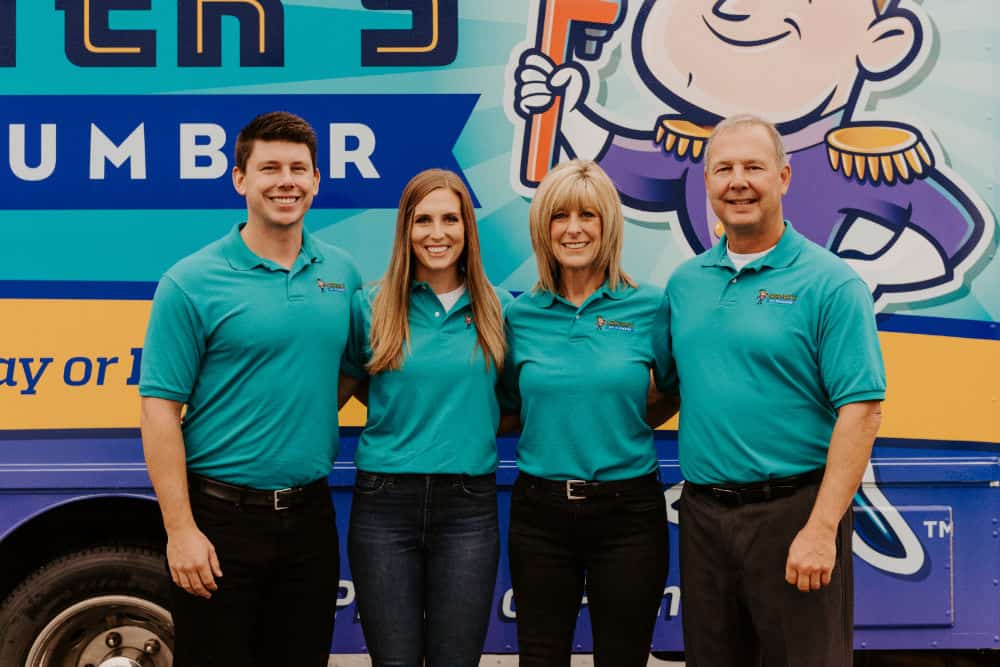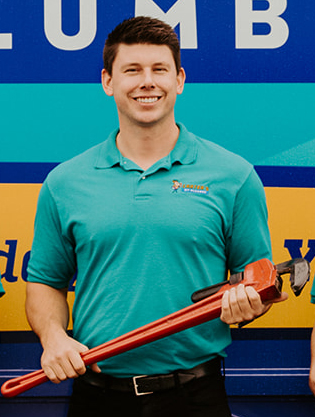Table of Contents
RV Plumbing Concerns for the Avid Traveler
RV Plumbing needs regular maintenance and especially now that Spring is here and RV season is around the corner. National parks, beach vacations, just plain roaming… for many people, an RV is a ticket to rest, relaxation, and the great American Splendor. However, RVs are homes on wheels, and just like homes, they have intricate plumbing systems (in some ways more intricate) that can malfunction and put a costly damper on your rest, relaxation, and American Splendor. Practicing regular preventative maintenance, with the goal of sanitizing without damaging, will ensure your home on wheels operates in tip-top shape and your summer vacation is everything you want it to be.
RV Preventative Maintenance
The best way to reduce or eliminate plumbing issues in your RV is to be careful of what you put down its drains. Each drain, hose, and sewer line has a specific job to perform:
- Drains catch debris that can harm pipes;
- Tanks hold waste;
- Sewer lines are conduits that allow you to remove waste from your RV.
Don’t let anything enter your RV’s plumbing system that can stop it up, and dump your tanks regularly and properly. To properly dump your tank, you must:
- Empty the tank;
- Backwash;
- Cleanse your lines;
- Sanitize.
Perform those steps regularly and every so often, perform a deep cleaning to keep your plumbing functioning properly and odor free. To maintain and sanitize your RV’s waste, gray, and freshwater tanks, follow the instructions here.
Always cover the drain opening on your shower floor to keep debris from entering your plumbing system. Shower heads become clogged and shower/tub drains fill with residue and soap scum. If your drain has heavy soap scum build-up:
- Remove the build-up;
- Soak in CLR;
- Rinse thoroughly;
- Reinsert the drain.
It is best to simply replace a leaky shower head and faucet. RV shower heads are specialty items because they have a stop/start feature that allows you to take navy baths.
If your toilets are not kept clean, urine and feces can harden, stick to the bowl, and begin to smell; your reservoir can discolor; toilet paper can stick to your flapper and cause it to malfunction. These issues attract germs and vermin and endanger your daily health.
Keep your fresh water line open when using your RV. Otherwise, water will overflow its holding tank and flood your RV. The weight of additional water may also crack the tank.
If you don’t want to perform this maintenance yourself, an experienced, licensed plumber can do it for you.
Use Proper Cleaning Tools for RV Plumbing
Only use RV approved chemicals and tools to clean your RV plumbing. Most of the tools, chemicals, and equipment designed for use in your home plumbing cannot be used in your RV plumbing because of the way its systems are configured and the materials with which it is made. For example, a plunger will not unclog your RV’s toilet and Drano will damage your pipes and fittings. Find the best tools and chemicals to use in your RV here.
Use gentle products in your RV’s toilet, that will disinfect safely and won’t harm your toilet or any other parts of your plumbing system.
Each RV maintenance tool has its own purpose and should be used accordingly. For example, if your RV doesn’t have a back-wash system, you will need a special wand that hooks up to an external hose. This wand pressure cleans the inside of your waste water tank and reduces sludge build-up on your tank’s walls. For proffesional help you can hire Carter’s Plumber visiting this page: drain cleaning Indianapolis.
Winterize RV plumbing
If you live or travel in a cold climate, you must take appropriate steps to protect the pipes and hoses from freezing and breaking. If you are living in your RV in cold weather:
- Turn off all unnecessary water;
- Keep your tanks as empty as possible;
- Insulate your exterior sewer and water hoses;
- Protect your undercarriage.
If you are not living in your RV during the cold weather, KOA provides a thorough step-by-step checklist for winterizing. To properly winterize your RV plumbing, you will need the following items:
- Non-toxic RV antifreeze;
- Water heater bypass kit;
- Holding tank cleaning wand;
- Water pump converter kit or tubing to connect inlet side of water pump;
- Basic hand tools to remove drain plugs.
Once you have assembled the required tools, follow the steps on KOA’s website to thoroughly and safely winterize your RV, and remember to de-winterize before next season!



